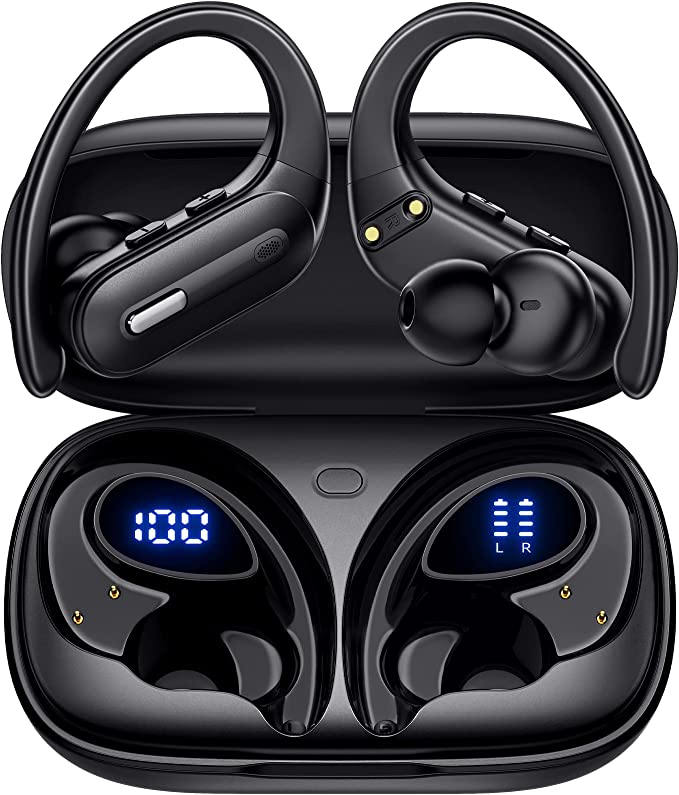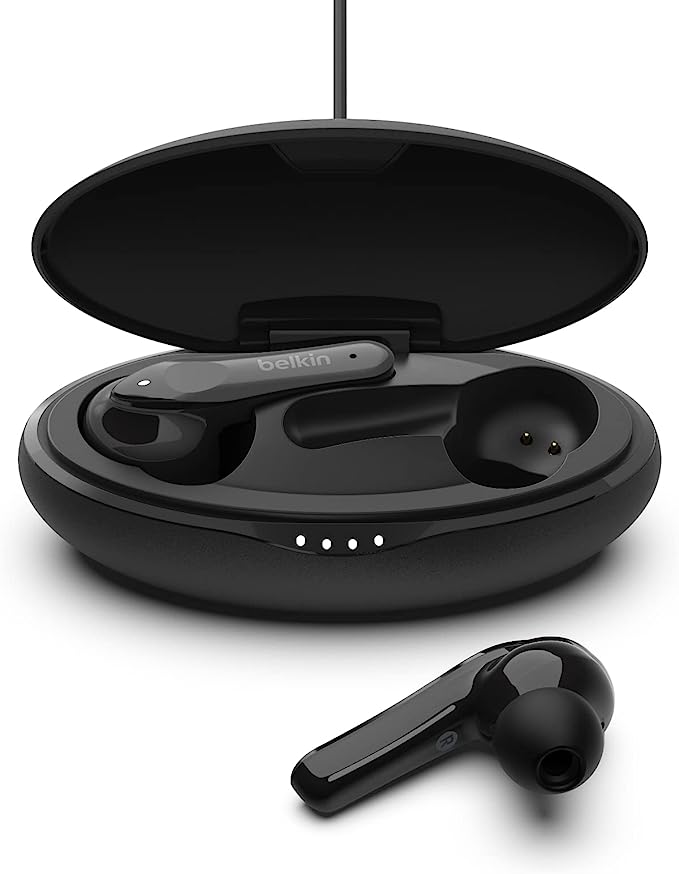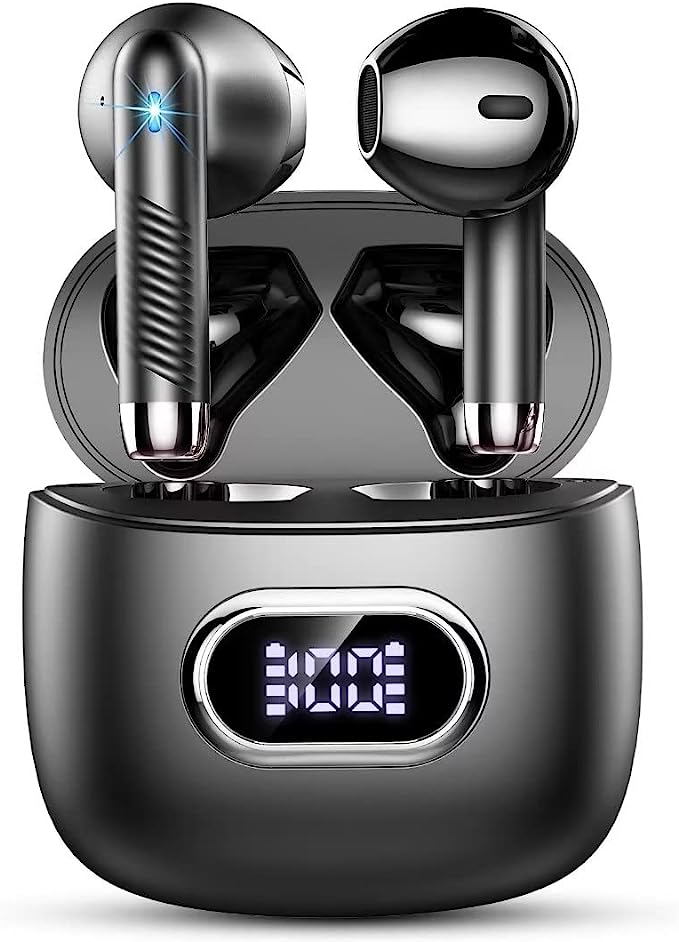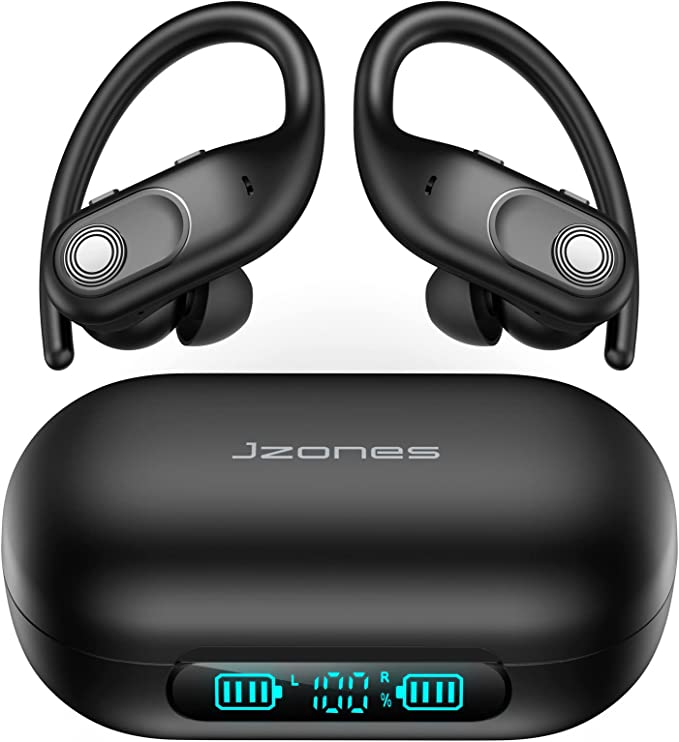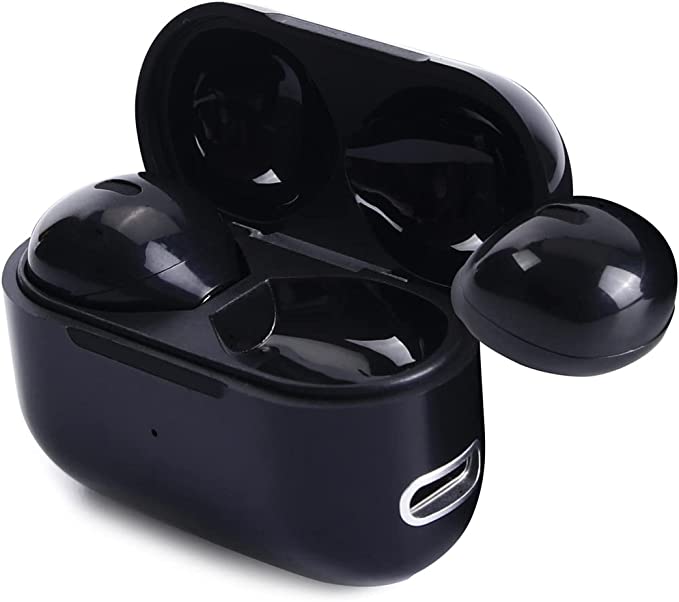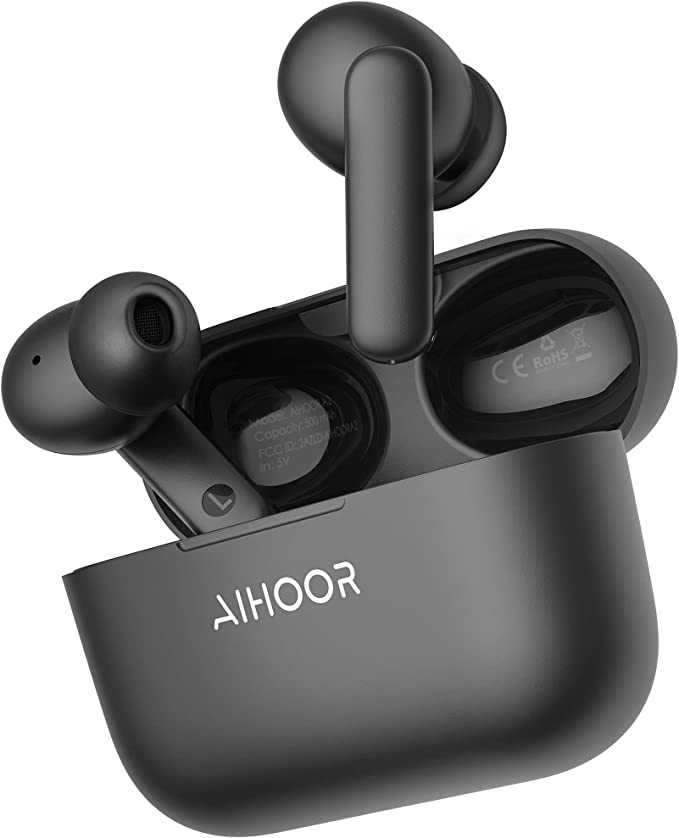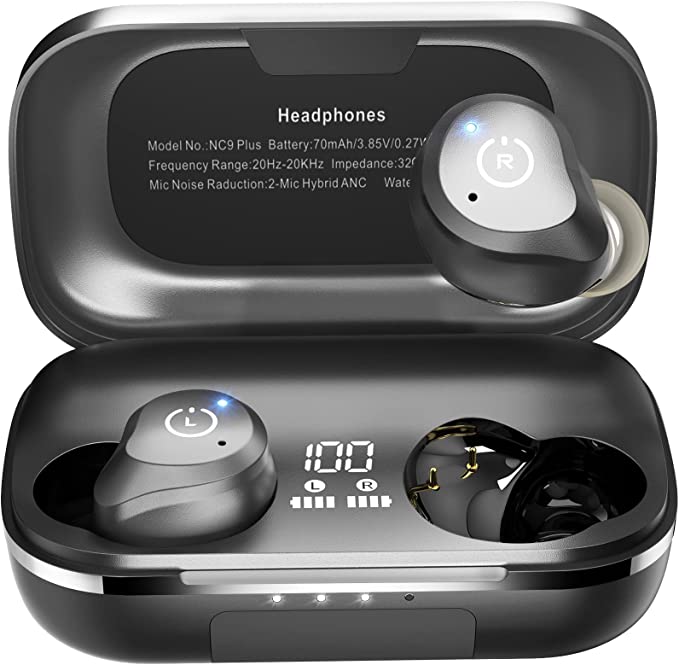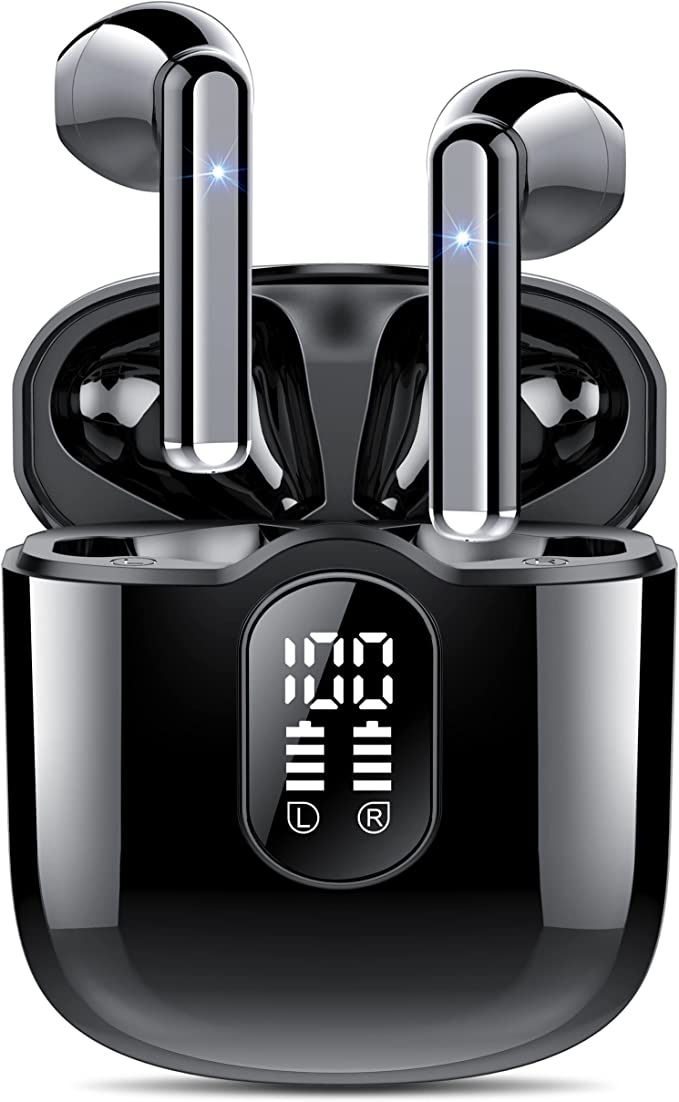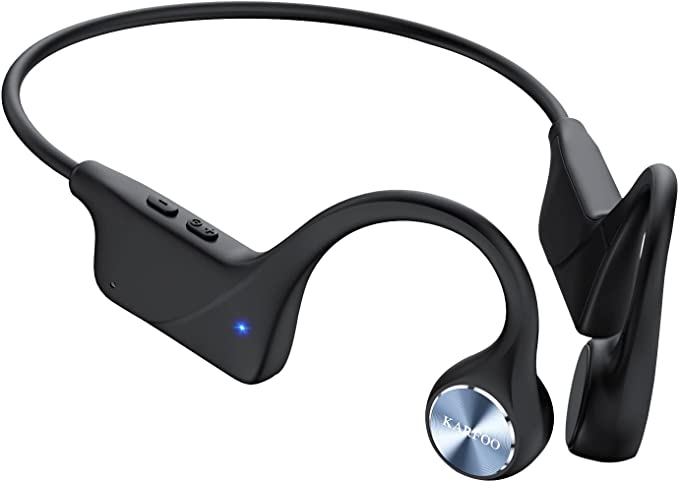ANINUALE S18 Wireless Earbuds: Experience the Seamless World of Bluetooth 5.3
Update on Aug. 5, 2025, 7:11 a.m.
There is a quiet magic to modern life. It’s in the way a podcast seamlessly follows you from your kitchen to your car, or how a favorite song can create a bubble of focus in a bustling café. This effortless, invisible stream of sound feels inherent to our world, yet it’s built upon a hidden architecture of ingenious compromises, historical accidents, and rigorous engineering. The simple pair of wireless earbuds you use every day, exemplified here by the ANINUALE S18, is not just a piece of plastic and silicon; it’s a vessel carrying decades of technological history.

To truly appreciate the device in your ear, we must travel back not to the birth of the microchip, but to the 10th century, to the court of a Viking king who united the warring tribes of Denmark and Norway. His name was Harald Gormsson, and his epithet, likely due to a dead tooth, was “Bluetooth.” Centuries later, in 1996, engineers from Intel, Ericsson, and Nokia, seeking to unite the disparate communication protocols of the nascent digital age, chose his name for their new short-range radio standard. The goal was modest: to create a single, wireless way to connect devices. The result was a revolution. The ANINUALE S18, with its Bluetooth 5.3 protocol, is a direct descendant of that ambitious idea, a tiny, unified kingdom of sound.

A More Stable Connection, Forged in the Crowd
The freedom of wireless audio is only as good as the stability of its connection. Early Bluetooth users will remember the frustrating stutters and dropouts that occurred in crowded areas. This happens because Bluetooth operates on the 2.4 GHz ISM band, a public slice of the radio spectrum that acts like a massively congested highway, crammed with traffic from Wi-Fi routers, microwaves, and countless other devices.
This is where the sophistication of Bluetooth 5.3 becomes apparent. It doesn’t just blindly transmit; it intelligently navigates. The protocol employs an advanced form of Adaptive Frequency Hopping, a technique with roots in WWII-era military communications designed to prevent signal jamming. A key feature is enhanced Channel Classification, which allows the earbuds to constantly scan the 1600 channels available to them every second. They identify which “lanes” of the highway are clear and which are jammed, hopping between the clear ones to maintain a clean, uninterrupted signal. For the user of the S18, this isn’t an abstract concept—it’s the reason your music doesn’t falter when you walk into a busy gym or step onto a crowded train platform. It’s the science of an unbroken listening experience.

The Engineering of Impermeability: Decoding IPX7
This engineering philosophy extends beyond the invisible radio waves to the physical resilience of the device itself. The ANINUALE S18 boasts an IPX7 Waterproof rating, a term often seen but rarely understood. This isn’t a vague marketing promise; it’s a precise standard defined by the International Electrotechnical Commission (IEC) in their document IEC 60529.

Let’s break down the code. “IP” stands for Ingress Protection. The first digit rates against solid particle ingress (like dust); the ‘X’ in IPX7 signifies it has not been rated for this. The second digit, the ‘7’, is the measure of water protection, and it is a testament to serious engineering. To earn this rating, a device must survive being fully submerged in 1 meter of fresh water for 30 minutes without any harmful ingress.
Consider the challenge: a tiny earbud has multiple openings for the speaker driver, microphones, and charging contacts. Sealing these against the hydrostatic pressure of a meter of water is a significant feat. Engineers must use precision-molded housings, microscopic rubber gaskets, and sometimes even hydrophobic nano-coatings to create a watertight fortress for the delicate electronics within. An IPX7 rating means your earbuds are not just “sweat-resistant”; they are built to survive a sudden downpour, an accidental drop in the sink, or the most intense workout you can muster. It represents a tangible layer of security for your investment.

Powering Freedom: The Science of Sustained Performance
All this advanced technology would be moot if shackled to a short battery life. The S18’s listed 60H Playtime, which includes the power stored in its charging case, is a direct beneficiary of the efficiency baked into the Bluetooth protocol. Bluetooth 5.3 is built upon the foundation of Bluetooth Low Energy (BLE), a standard designed for minimal power draw. Features like Connection Subrating allow the earbuds to sip power in a low-energy state, waking instantly when audio is streamed. This intelligent power management, combined with modern, energy-dense lithium-ion batteries, is what frees the user from constant charging. The inclusion of an LED Power Display on the case is a simple but crucial feature, a practical tool that directly addresses the common user pain point of “battery anxiety” by making power status transparent and predictable.

In the end, a device like the ANINUALE S18 is a culmination. It is the legacy of a Viking king, the ingenuity of military communication science, and the rigor of international engineering standards, all converging into a single, seamless experience. The rich, deep bass and clear stereo sound it aims to deliver are the final, audible step in a long and complex journey. Understanding this invisible architecture doesn’t just demystify the technology; it deepens our appreciation for the silent, extraordinary work that goes into crafting our personal soundscapes.


